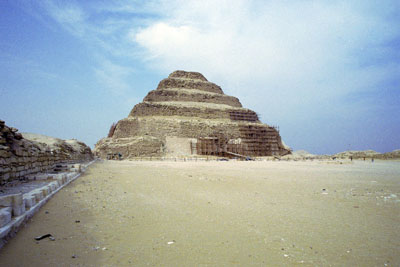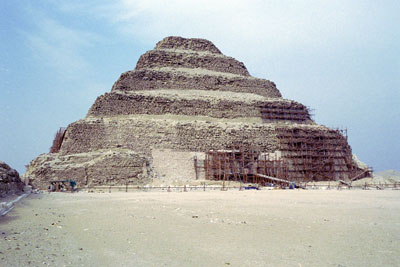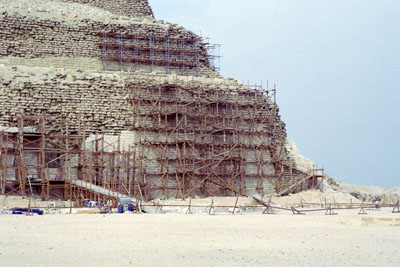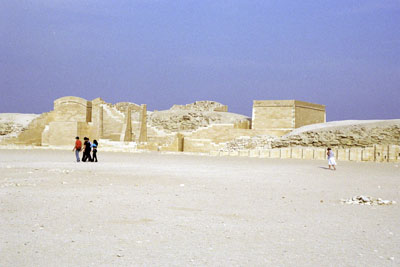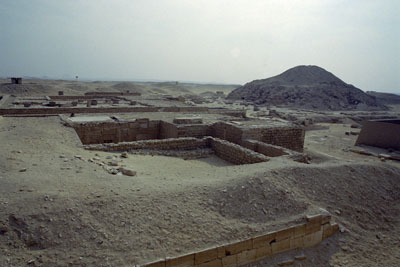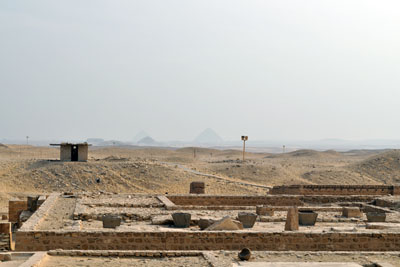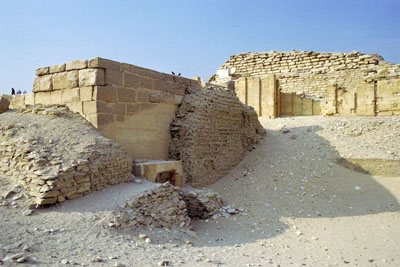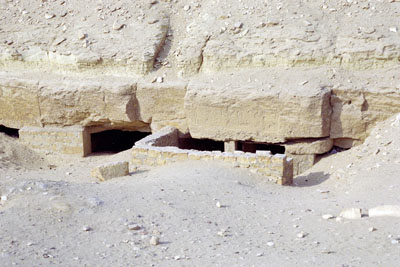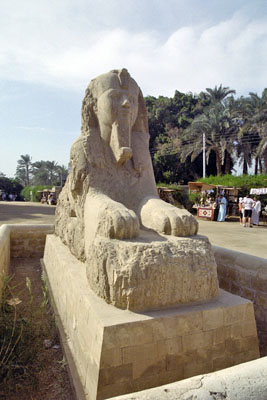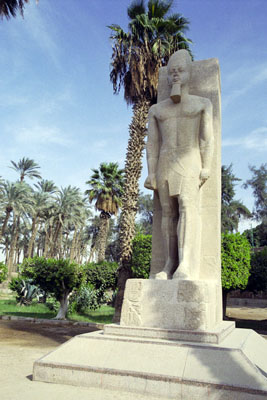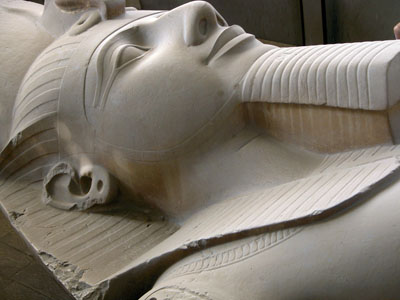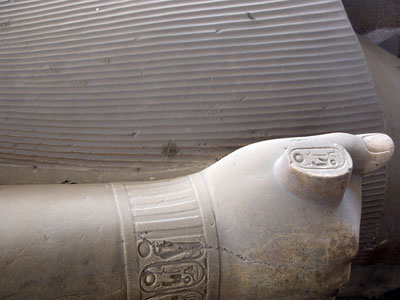The ancient city of Memphis was the capitol of lower Egypt in early Pharaonic times. Memphis was chosen as the capitol of a unified Egypt, in part because of its symbolic location between upper and lower Egypt and also because of strategic importance at the head of the Nile Delta. Little is known about Memphis from the Old Kingdom & the early days of Pharaonic Egypt, but it is clearly Egypt's most important city by the 4th Dynasty.
The importance of Memphis declined as Thebes (present day Luxor) became more powerful, eventually becoming capitol. While Thebes carried the clout, evidence suggests that Memphis remained an important commercial center. Later - as Alexandria rose, Memphis rose with it. Once again rivaling Thebes in importance, though remaining in the shadow of Egypt's newly formed capitol on the coast. Eventually, as the old religion disappeared and Christianity - followed by Islam - took over, the city faded in importance and then from memory. The stones of its monuments were used to built the new Islamic capitol of Fustat. Today, little is left of the actual city but an open air museum.
Saqquara was the primary necropolis for Memphis. The place was used as a burial ground from the time of the first Dynasty and continued in this use for around 3000 years. The earliest burials were simple affairs, with small rooms carved underground. Eventually, large grave markers, known as mastabas were built. Over time, these developed into pyramids. The site is home to many pyramids. In total, 17 Egyptian kings built pyramids here, (there were well over 100 pyramids built in the Cairo area), but my favorite by far is the step Pyramid of Djoser.
The Step Pyramid of Djoser marks a new development in burials. By stacking several mastabas of descending size on top of each other, he formed the first pyramid. A revolution that would help define modern notions of Egypt. The step pyramid was designed by Imhotep the world's first architect of record, (not the evil mummy from the movie with Brendan Fraser). Built in the 27th century BC (4600 years ago), it is the oldest building ever with a designer's name actually attached to it. How cool is that?!!!
National Geographic has an excellent site on the pyramid and you can get detailed info about Saqqara at ancient-egypt.org . Wikipedia has a very cool pyramid index.
